Abstract
Collins, F. M. (University of Adelaide, Adelaide, South Australia), and Margaret Milne. Heat-labile antigens of Salmonella enteritidis. II. Mouse-protection studies. J. Bacteriol. 92:549–557. 1966.—A number of extracts prepared from a virulent and an avirulent strain of Salmonella enteritidis were used to immunize mice. Living and alcohol-killed whole-cell vaccines were also used to compare the relative protective value of the various preparations. All mice were challenged intravenously with 100 to 1,000 ld50 of S. enteritidis. Daily counts of the liver, spleen, and blood populations of vaccinated and control mice revealed that the challenge organism was rapidly eliminated only in those mice which had been immunized with a living vaccine. Immunization with extracts resulted in rapid clearance of S. enteritidis from the blood, but, after a delay of 24 to 48 hr, the bacterial populations increased until a maximal liver and spleen population of approximately 5 × 108 was reached. Between 55 and 100% of the immunized animals died, compared with 95 to 100% of the controls. With all four extracts, it was only the first antigenic fraction eluted from diethylaminoethyl cellulose which had any detectable effect on host resistance. The ineffectiveness of vaccines prepared with the various extracts or with whole killed bacteria relative to the protection observed after immunization with living organisms is discussed.
Full text
PDF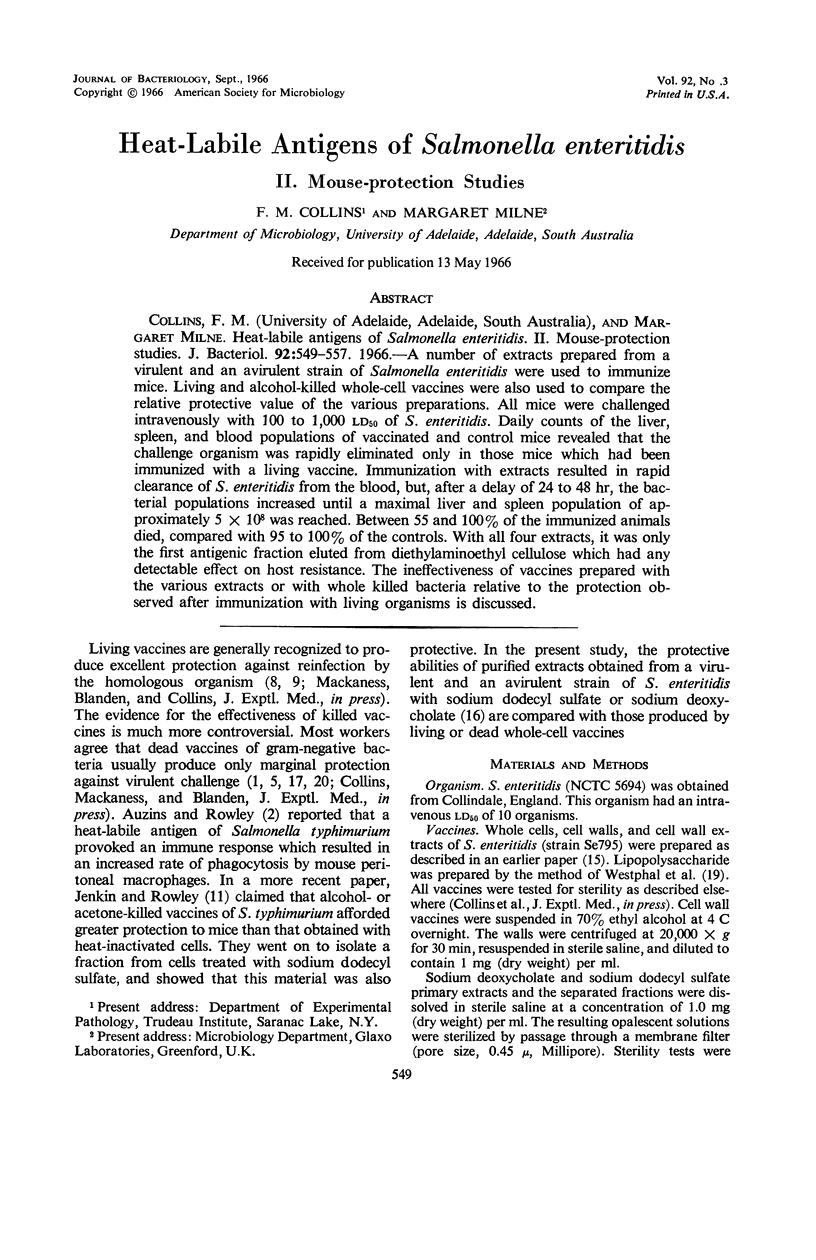
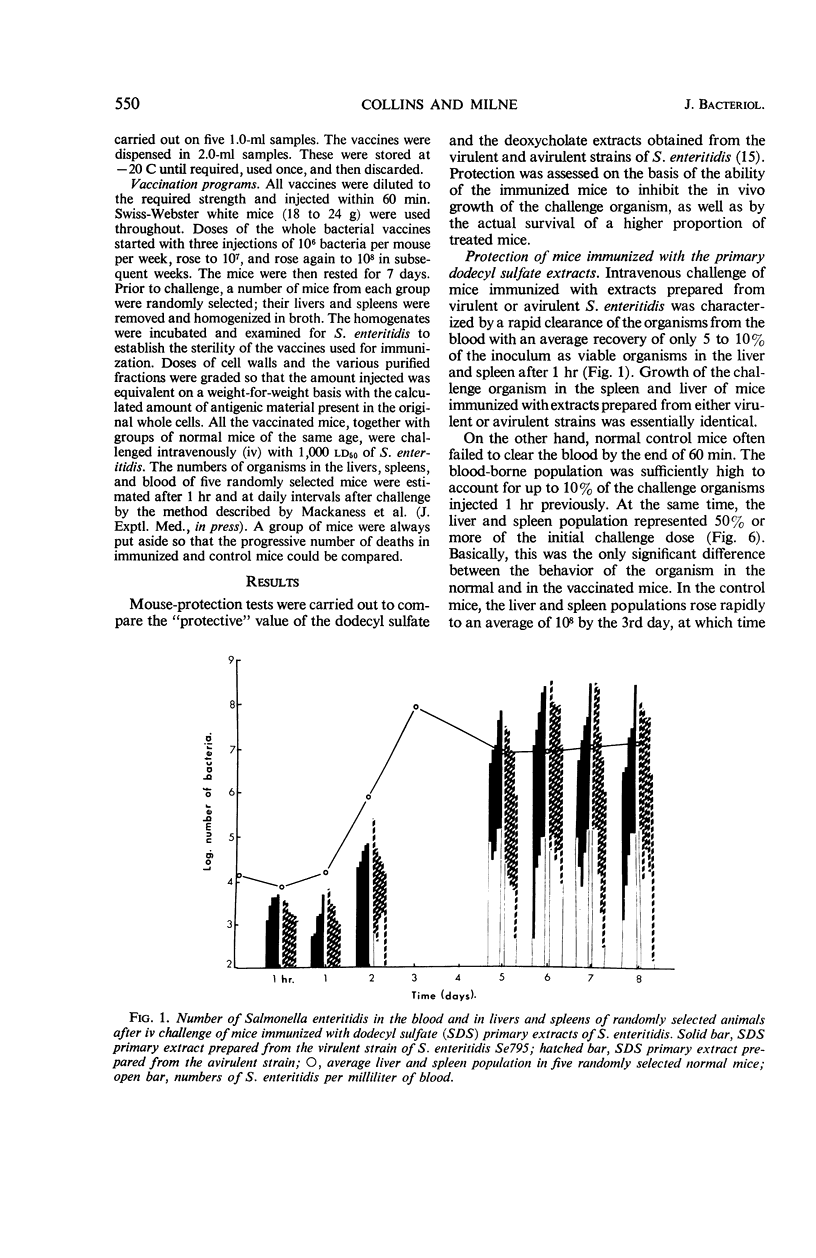
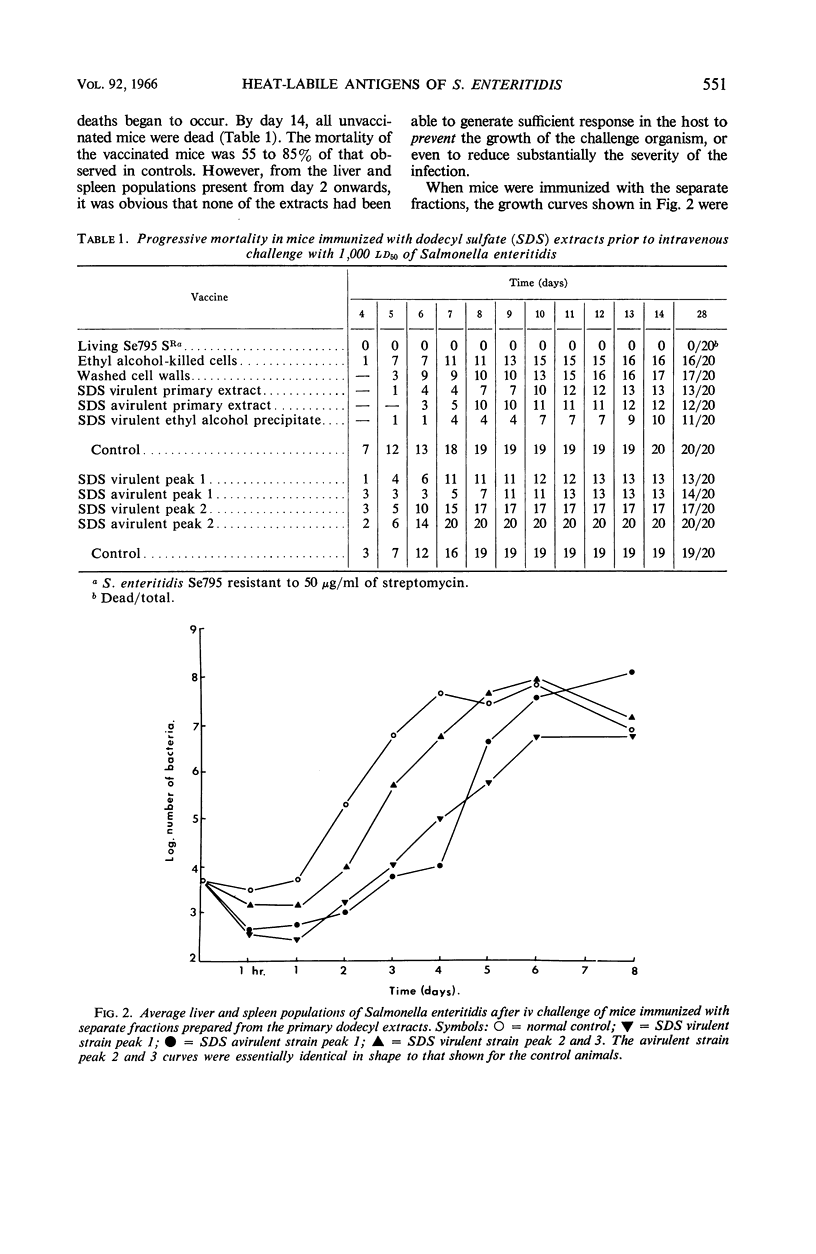

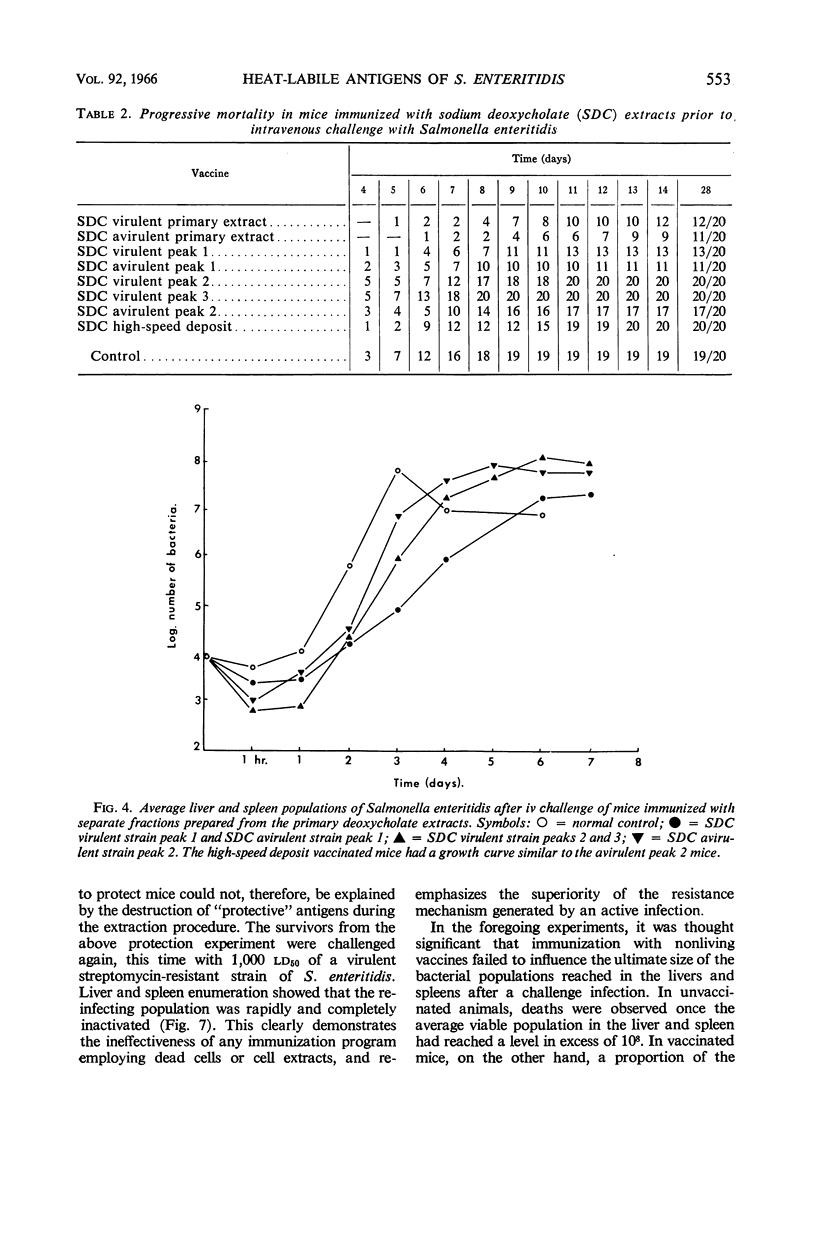
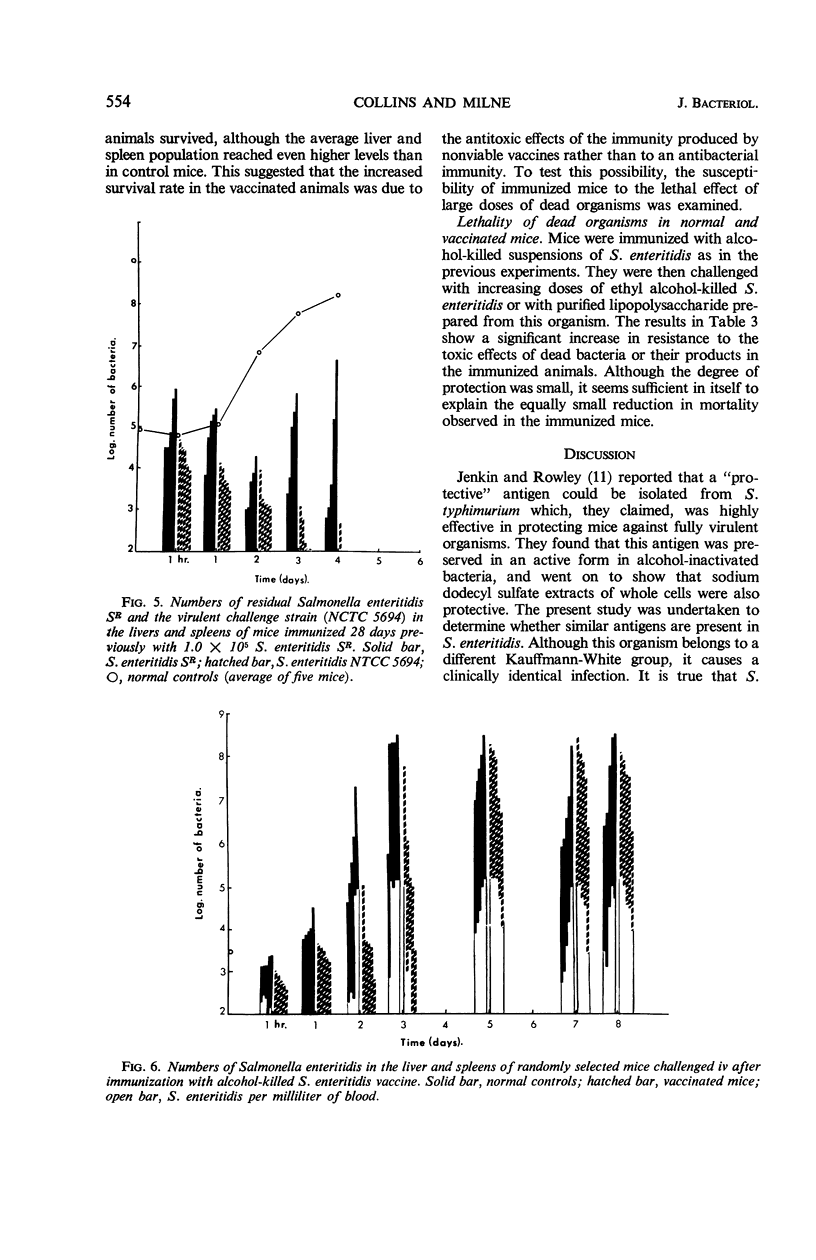
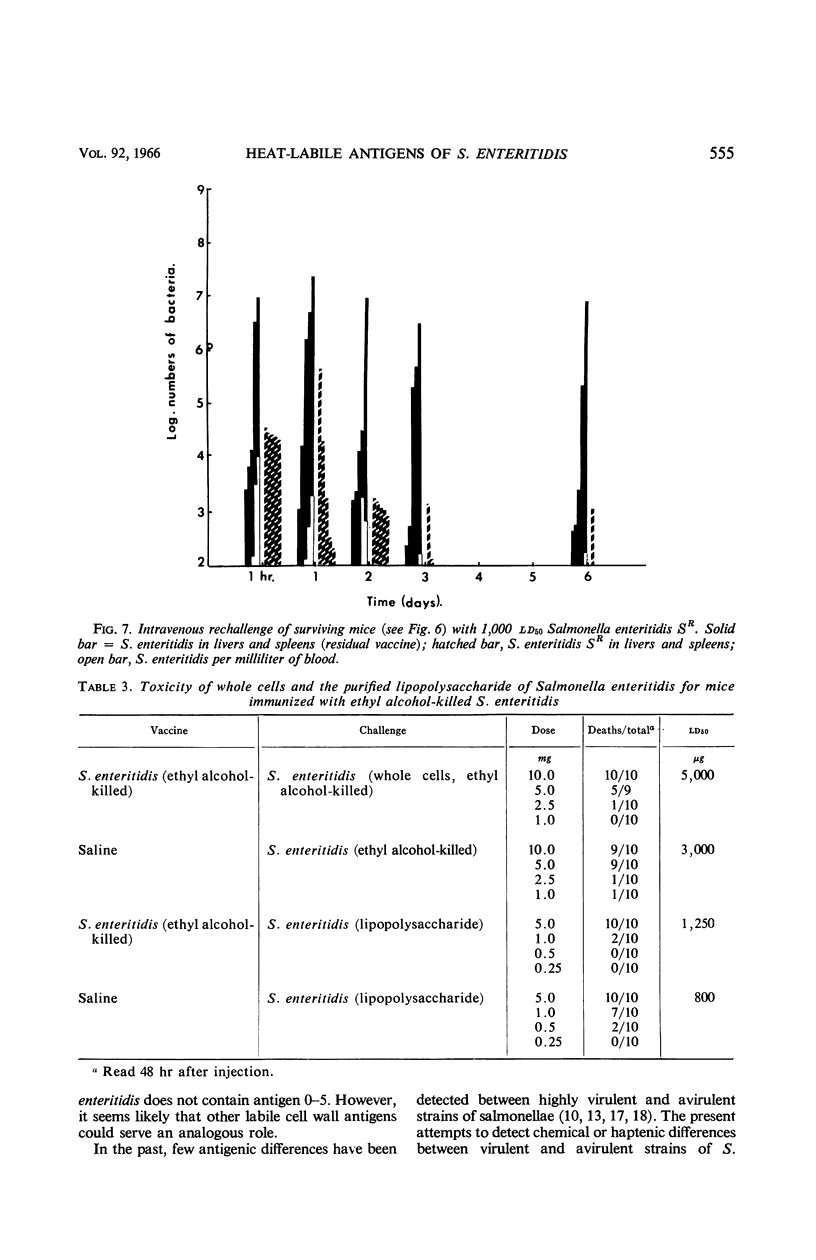
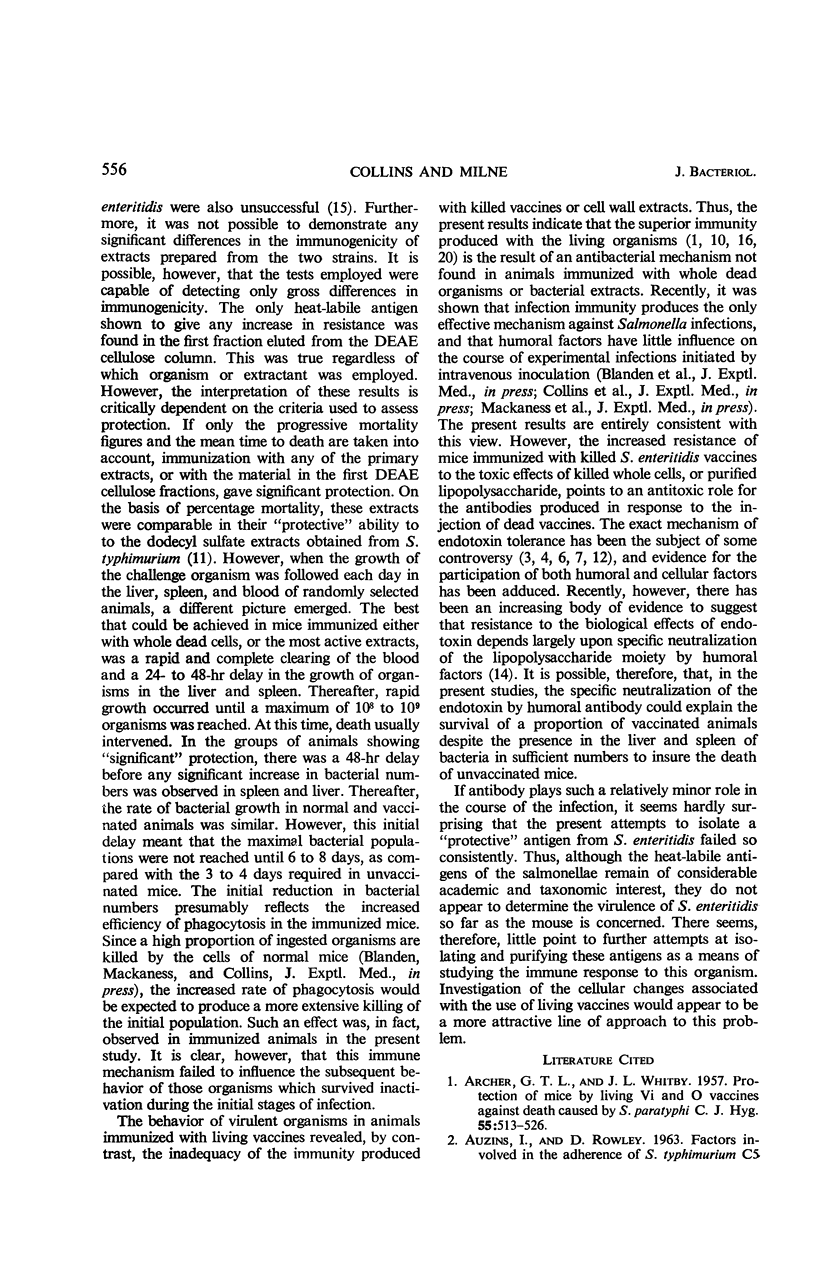
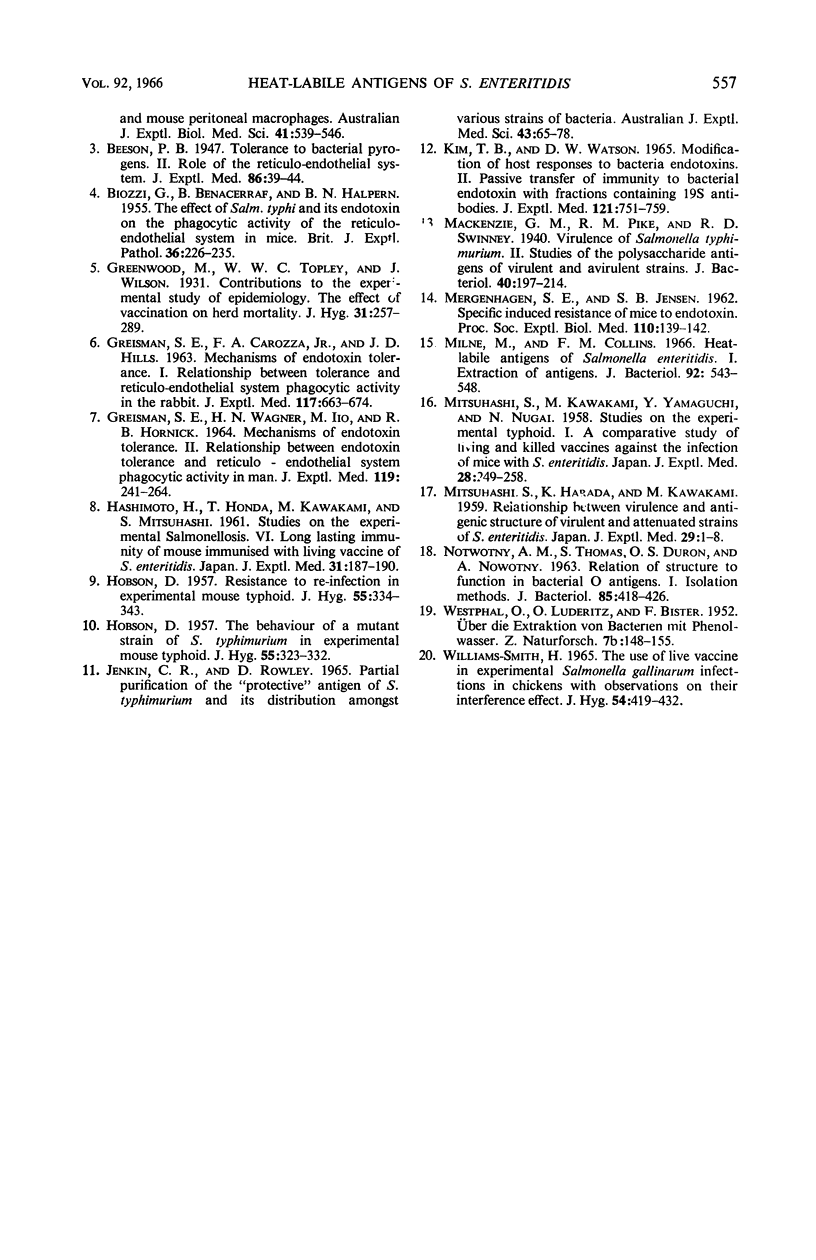
Selected References
These references are in PubMed. This may not be the complete list of references from this article.
- ARCHER G. T., WHITBY J. L. Protection of mice by living Vi and O vaccines against death caused by Salmonella paratyphi C. J Hyg (Lond) 1957 Dec;55(4):513–526. doi: 10.1017/s0022172400037426. [DOI] [PMC free article] [PubMed] [Google Scholar]
- AUZINS I., ROWLEY D. FACTORS INVOLVED IN THE ADHERENCE OF S. TYPHIMURIUM C5 AND MOUSE PERITONEAL MACROPHAGES. Aust J Exp Biol Med Sci. 1963 Oct;41:539–546. doi: 10.1038/icb.1963.44. [DOI] [PubMed] [Google Scholar]
- BIOZZI G., BENACERRAF B., HALPERN B. N. The effect of Salm. typhi and its endotoxin on the phagocytic activity of the reticuloendothelial system in mice. Br J Exp Pathol. 1955 Jun;36(3):226–235. [PMC free article] [PubMed] [Google Scholar]
- GREISMAN S. E., CAROZZA F. A., Jr, HILLS J. D. Mechanisms of endotoxin tolerance. I. Relationship between tolerance and reticuloendothelial system phagocytic activity in the rabbit. J Exp Med. 1963 Apr 1;117:663–674. doi: 10.1084/jem.117.4.663. [DOI] [PMC free article] [PubMed] [Google Scholar]
- GREISMAN S. E., WAGNER H. N., IIO M., HORNICK R. B. MECHANISMS OF ENDOTOXIN TOLERANCE. II. RELATIONSHIP BETWEEN ENDOTOXIN TOLERANCE AND RETICULOENDOTHELIAL SYSTEM PHAGOCYTIC ACTIVITY IN MAN. J Exp Med. 1964 Feb 1;119:241–264. doi: 10.1084/jem.119.2.241. [DOI] [PMC free article] [PubMed] [Google Scholar]
- HASHIMOTO H., HONDA T., KAWAKAMI M., MITSUHASHI S. Studies on the experimental salmonellosis. VI. Longlasting immunity of mouse immunized with live vaccine of Salmonella enteritidis. Jpn J Exp Med. 1961 Jun;31:187–190. [PubMed] [Google Scholar]
- HOBSON D. Resistance to reinfection in experimental mouse typhoid. J Hyg (Lond) 1957 Sep;55(3):334–343. doi: 10.1017/s0022172400037244. [DOI] [PMC free article] [PubMed] [Google Scholar]
- JENKIN C. R., ROWLEY D. PARTIAL PURIFICATION OF THE "PROTECTIVE" ANTIGEN OF SALMONELLA TYPHIMURIUM AND ITS DISTRIBUTION AMONGST VARIOUS STRAINS OF BACTERIA. Aust J Exp Biol Med Sci. 1965 Feb;43:65–78. doi: 10.1038/icb.1965.5. [DOI] [PubMed] [Google Scholar]
- KIM Y. B., WATSON D. W. MODIFICATION OF HOST RESPONSES TO BACTERIAL ENDOTOXINS. II. PASSIVE TRANSFER OF IMMUNIY TO BACTERIAL ENDOTOXIN WITH FRACTIONS CONTAINING 19S ANTIBODIES. J Exp Med. 1965 May 1;121:751–759. doi: 10.1084/jem.121.5.751. [DOI] [PMC free article] [PubMed] [Google Scholar]
- MITSUHASHI S., KAWAKAMI M., YAMAGUCHI Y., NAGAI M. Studies on the experimental typhoid. 1. A comparative study of living and killed vaccines against the infection of mice with S. enteritidis. Jpn J Exp Med. 1958 Aug;28(4):249–258. [PubMed] [Google Scholar]
- Mackenzie G. M., Pike R. M., Swinney R. E. Virulence of Salmonella typhimurium: II. Studies of the Polysaccharide Antigens of Virulent and Avirulent Strains. J Bacteriol. 1940 Aug;40(2):197–214. doi: 10.1128/jb.40.2.197-214.1940. [DOI] [PMC free article] [PubMed] [Google Scholar]
- Milne M., Collins F. M. Heat-labile antigens of Salmonella enteritidis. I. Extraction of antigens. J Bacteriol. 1966 Sep;92(3):543–548. doi: 10.1128/jb.92.3.543-548.1966. [DOI] [PMC free article] [PubMed] [Google Scholar]
- NOWOTNY A. M., THOMAS S., DURON O. S., NOWOTNY A. Relation of structure to function in bacterial O antigens. I. Isolation methods. J Bacteriol. 1963 Feb;85:418–426. doi: 10.1128/jb.85.2.418-426.1963. [DOI] [PMC free article] [PubMed] [Google Scholar]


